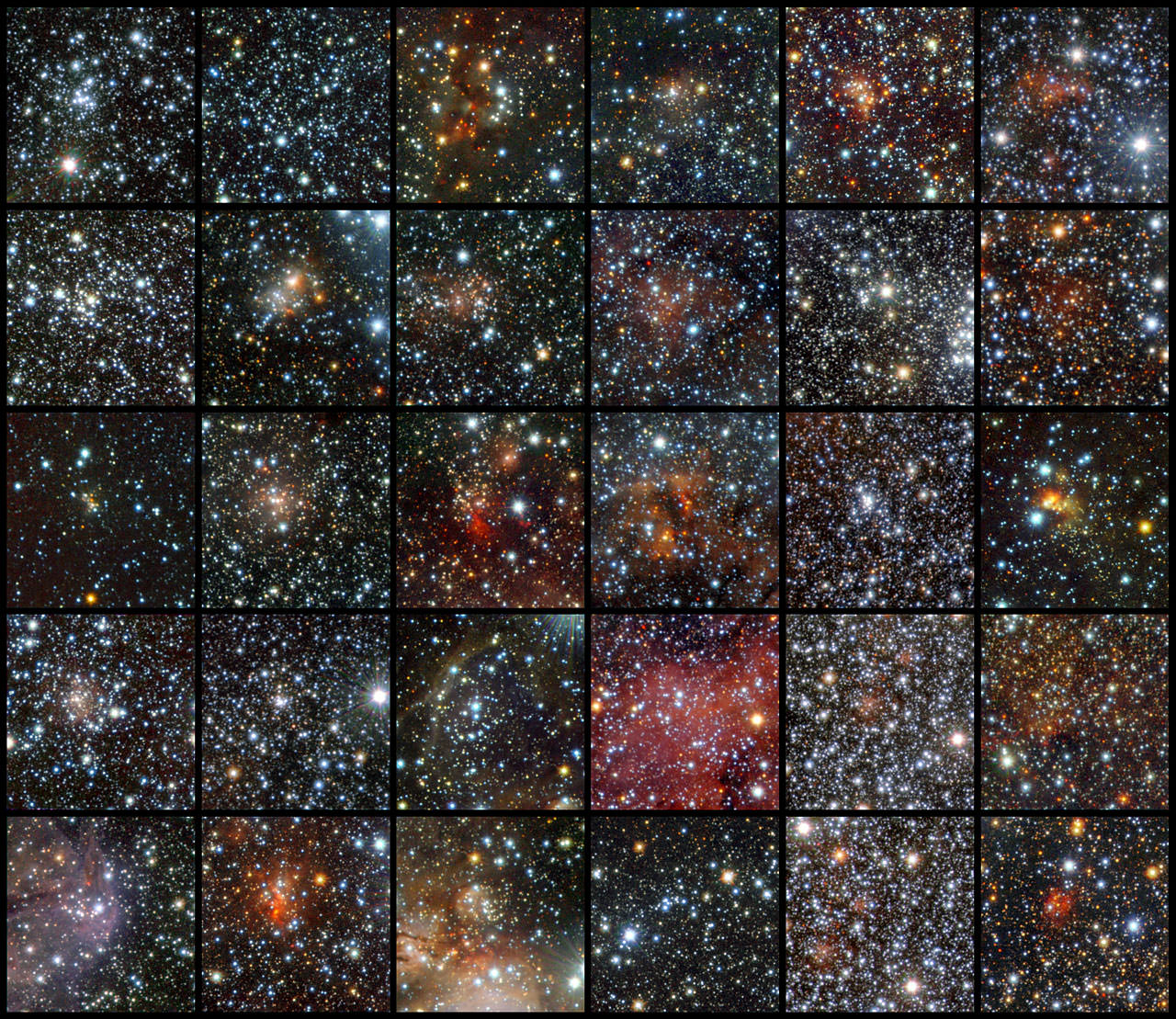[/caption]
“Ninety-six clusters of stars in the sky…. Ninety-six clusters of stars… You take one down and pass it around…” Do you need ninety-six new reasons to love astronomy? Then you’re going to want to hear about all the new discoveries the VISTA infrared survey telescope at ESO’s Paranal Observatory has made. Read on…
An international team of astronomers has taken observations to the next level with their discovery of 96 new star clusters which have been hidden behind the dusty cloak of interstellar matter. By utilizing sensitive infrared detectors and the world’s largest survey telescope, the intrepid crew set a new record for finding so many faint and small clusters at one time.
“This discovery highlights the potential of VISTA and the VVV survey for finding star clusters, especially those hiding in dusty star-forming regions in the Milky Way’s disc. VVV goes much deeper than other surveys,” says Jura Borissova, lead author of the study.
As astronomy enthusiasts well know, there’s more to a galactic cluster than just a pretty grouping of stars. Age, relation and motion all play a role. Some are loose groupings – held together by mutual gravitational attraction. Others are torn apart through interactions. Still others are in the process of formation, caught in the act with their gases showing. Yet all share a common denominator: they are around few hundred million years old and they are the by-product of a galaxy with active star formation.
“In order to trace the youngest star cluster formation we concentrated our search towards known star-forming areas. In regions that looked empty in previous visible-light surveys, the sensitive VISTA infrared detectors uncovered many new objects,” adds Dante Minniti, lead scientist of the VVV survey.
Once the grouping has been discovered, classification comes next. Through the use of specialized computer software, the team was able to separate foreground stars from genuine cluster components. Observation then came into play as stellar members were counted, sizes estimated, distances computed and extinction taken into consideration.
“We found that most of the clusters are very small and only have about 10–20 stars. Compared to typical open clusters, these are very faint and compact objects — the dust in front of these clusters makes them appear 10,000 to 100 million times fainter in visible light. It’s no wonder they were hidden,” explains Radostin Kurtev, another member of the team.
Since antiquity only 2500 open clusters have been found in the Milky Way, but astronomers estimate there might be as many as 30,000 still hiding behind the dust and gas. That means these new 96 open clusters could be only the very beginning of a host of new discoveries. “We’ve just started to use more sophisticated automatic software to search for less concentrated and older clusters. I am confident that many more are coming soon,” adds Borissova.
Until then we’ll just “Take one down and pass it around… 29,999 clusters of stars in the sky.”
Original Story Source: ESO Press Release.


For a moment there, Tammy, while I was reading that section, and still fuzzy from having had one too many cans of beer last night, I thought you had written… er… oh never mind.
ivan got the joke! 😀
Which is surprising, seeing that this is formal writing. (+.o)
Which is surprising, seeing that this is formal writing. (+.o)
Not really surprising, considering the amount of beer that I’d had.
Will it eventually be possible to study these star clusters for the presence of orbiting planets?
I got 96 star clusters, But can’t find life on one.
tinyurl.com/427k7lo